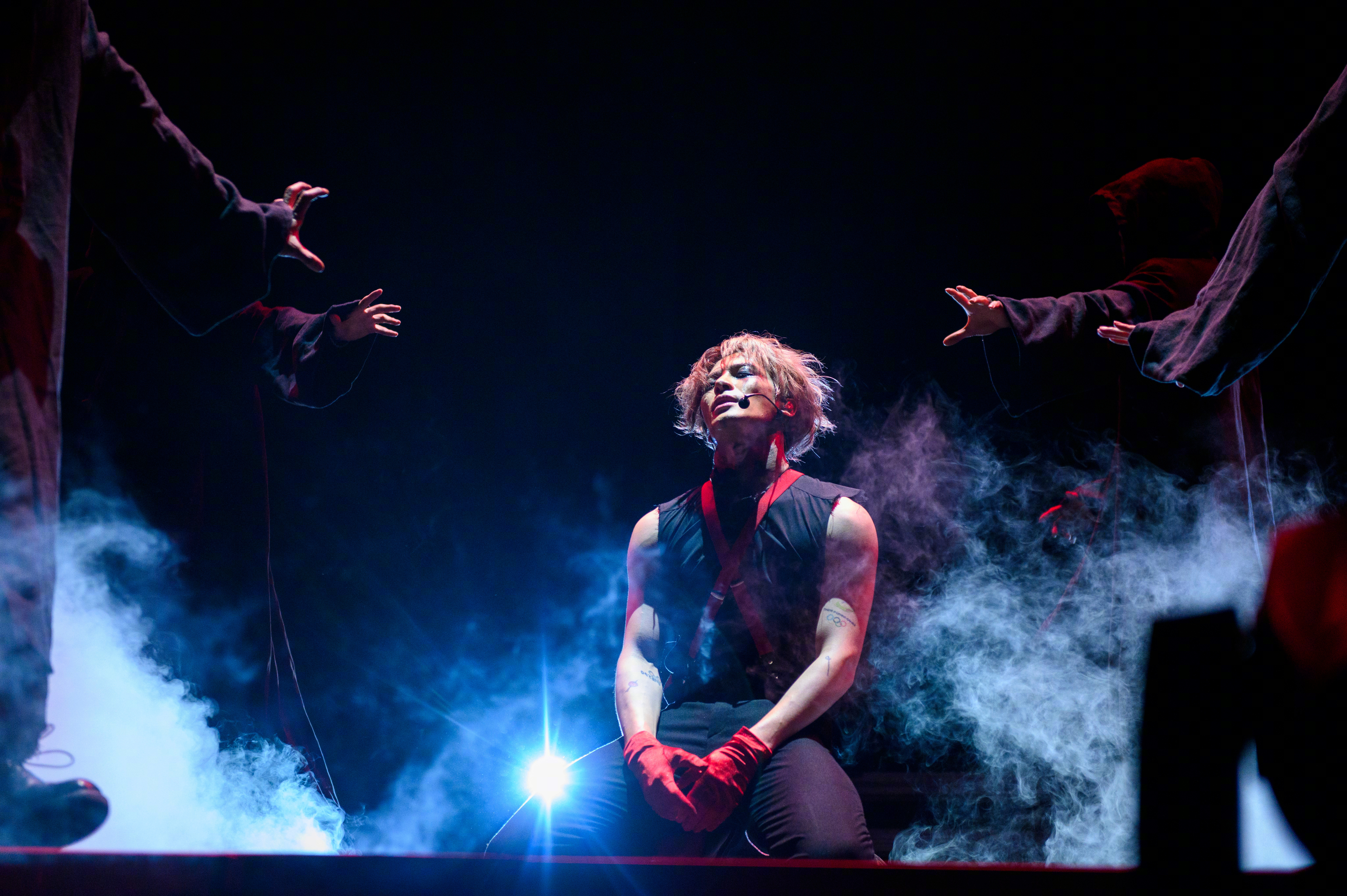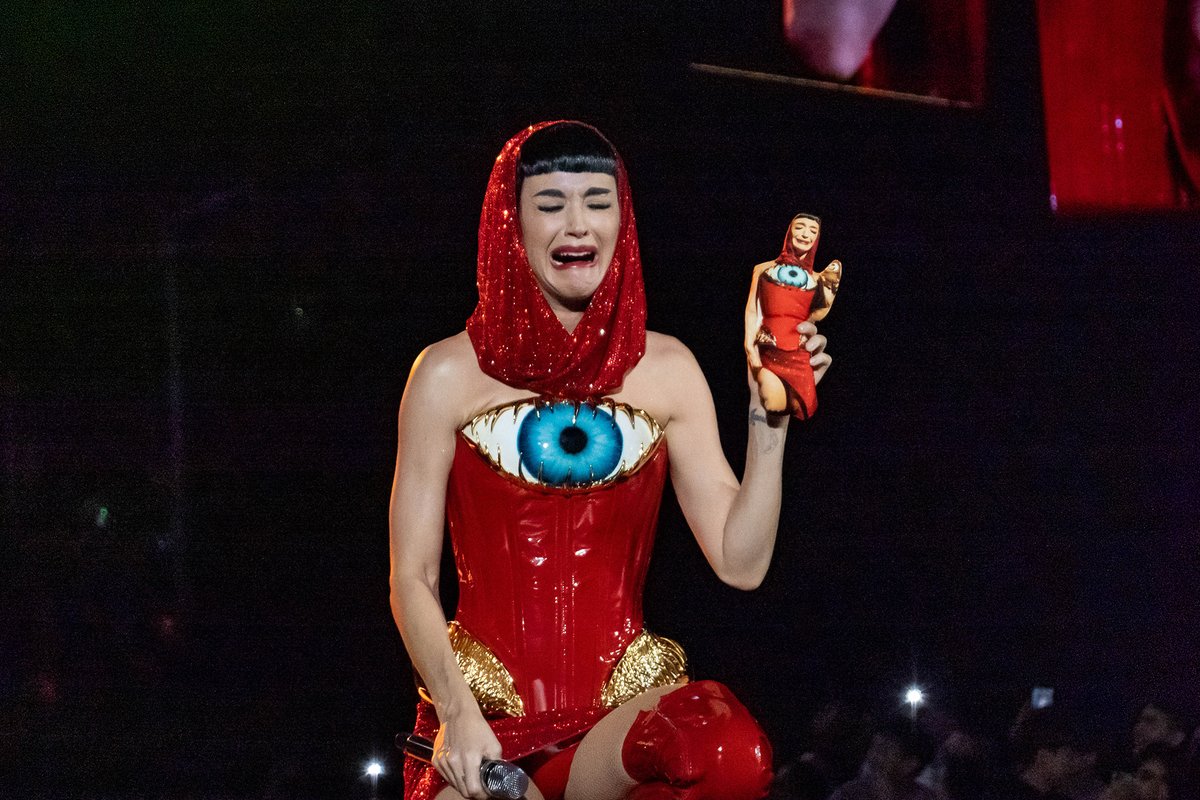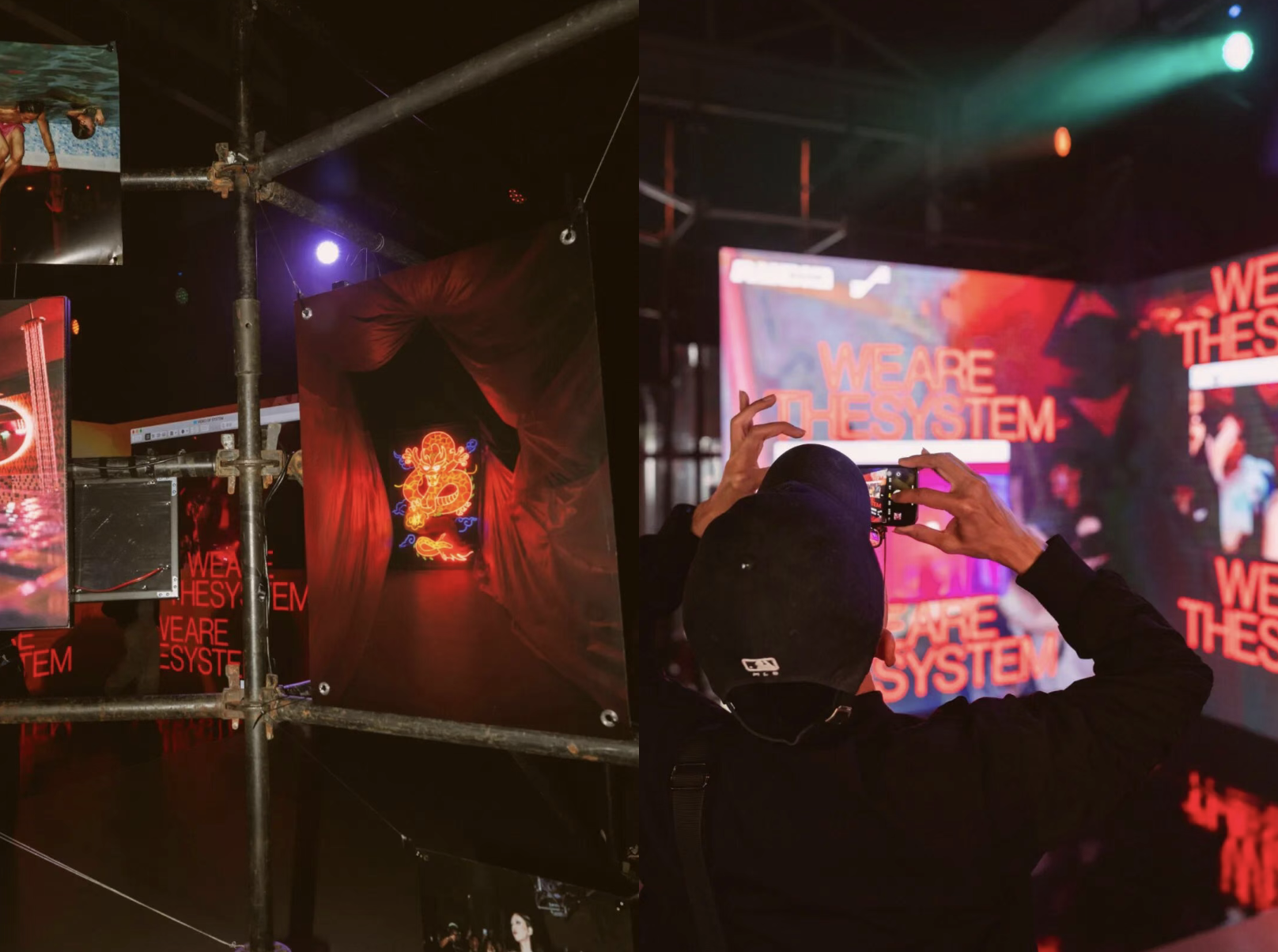In the long, complex, and hugely under-appreciated history of Asian/hip hop cultural exchange, no phenomenon stands taller than the Wu-Tang Clan.
For a group of Staten Islanders with hip hop dreams and few resources at hand, the local dollar theater’s imported stories of kung fu heroism and Eastern philosophy formed the foundations of an unstoppable ethos.
Part of it was a parallel between the supernatural world of wuxia (martial arts) films, and the lessons in street philosophy the group’s members had picked up in New York. Part of it was the representation of the Asian man, not a white person, as a symbol of strength — something that US audiences hadn’t seen before back in the ‘70s when these films made it the big screen.
“These films definitely resonate a lot in the black community,” explains RZA in a special interview for the re-release of the 36 Chambers DVD.
“It’s the underdog thing, it’s the brotherly thing […] and also I think it’s the escapism. Because you can go there and watch these movies, and it’s not even in America. It’s like a whole other world.”
Taking the themes they’d absorbed from kung fu cinema, the group charged forward, giving birth to a sound and a movement that would change hip hop forever — and creating a labyrinthine arsenal of complex allusions in the process.
Here, we seek to unpack some of those references, and shed some light on the Wu-Tang Clan’s love affair with Chinese culture.
Wu-Tang
Let’s start with the big question… where does Wu-Tang get its Wu-Tang?
The name’s origin goes back to a Shaw Brothers classic called Shaolin and Wu-Tang. In the film, the Shaolin fist style goes head to head with the Wu-Tang sword style, presenting a powerful piece of imagery that caught the group’s attention:
“You know, the thing about Wu-Tang in the movies was the sword style,” explained RZA in an interview with Edison Chen. “How they used the sword. And we took the idea that our tongue is our sword, and the best sword style is the Wu-Tang sword.”

A scene from Shaolin and Wu-Tang
U-God explains further details to the analogy in a 1994 documentary about the group:
“Wu-Tang represents a sword style of rhyming. Being that we are lyrical assassins, we are aware that the tongue is symbolic to the sword — like when in motion it produces wind. Just like when you hear the word ‘Wu’, you hear wind. That’s also the sound you hear when a sword is swinging on your neck. That’s why we say protect your neck.”
“What’s the commotion? Oh my Lord/another cord chopped by the Wu-Tang sword” – Method Man, “Method Man”
“Shaolin shadowboxing…and the Wu-Tang sword style. If what you say is true, the Shaolin and the Wu-Tang could be dangerous. Do you think your Wu-Tang sword can defeat me?” – Intro sample to “Bring da Ruckus”, from Shaolin and Wu-Tang
Shaolin
Any kung fu fan worth their salt will be able to tell you about the Shaolin Temple, the most legendary site in kung fu history. But to the Wu-Tang Clan, the words have a second meaning: Staten Island.
“From the slums of Shaolin, Wu-Tang Clan strikes again” – GZA’s opening lines on “Method Man”
In Shaolin and Wu-Tang, defectors from the Shaolin Temple leave to join the Wu-Tang sect. To the Wu-Tang Clan, that migration reflects their own movement away from Staten Island in order to share their music with the world at large. Explains RZA: “We came from Shaolin, but we’re bringing hip hop culture around the world.”
“Had secondhands, moms bounced on old man/so then we moved to Shaolin lands.” – Raekwon, “C.R.E.A.M.”
“I come from the Shaolin slum, and the isle I’m from, is coming through with enough n*ggas, enough guns.” – Inspectah Deck, “Da Mystery of Chessboxin’”
Related:
 Life with China’s Shaolin Monks: Fact vs. FictionArticle Nov 27, 2018
Life with China’s Shaolin Monks: Fact vs. FictionArticle Nov 27, 2018
36 Chambers
The 36 chambers has been an integral concept at the heart of the group’s identity since the release of their debut record Enter the Wu-Tang (36 Chambers).
The album’s title is a reference to another iconic Shaw Brothers film, The 36th Chamber of Shaolin, which stars Gordon Liu and is widely considered to be one of the greatest kung fu films of all time. Liu plays the monk San Te, who must master each individual “chamber” of the temple’s rigid Shaolin training curriculum. The film was also published under the alternative title The Master Killer, later becoming the moniker of lesser-known Wu-Tang member Masta Killa.
For a while, the group’s leader RZA was producing their tracks out of his very own 36 Chambers Studios. In his own words:
“What’s a chamber? Something a man must go through. Something a man must conquer.”
“And that’s one in the chamber, Wu-Tang banger/36 styles of danger.” – Raekwon, “Bring da Ruckus”
Ghostface Killah
Ghostface gets his name from the 1979 kung fu film, The Mystery of Chessboxing (which was also released internationally under the significantly lamer title, Ninja Checkmate).
In the film, a young kung fu acolyte strives to avenge his father’s death at the hands of the mysterious kung fu assassin, the Ghost Faced Killer. But the student is weak, and unable to stand against the master until he learns about the link between kung fu and xiangqi (Chinese chess) from a retired kung fu chief. Together, they team up to defeat the assassin, using “Double Horse Style”, a reference to the game.
The film also inspired the classic track from the group’s debut album, Da Mystery of Chessboxin’.
“A game of chess is like a swordfight — you must think first before you move.” – Intro sample to “Da Mystery of Chessboxin’”, from “Shaolin vs. Wu-Tang”
Masta Killa
Masta Killa was the last member to join the group, and the last one to release a solo album.
His name is also a reference to The 36th Chamber of Shaolin, which was originally released internationally under the titles The Master Killer and Shaolin Master Killer.
The film’s original title “Master Killer” is referenced in the opening skit to the track “7th Chamber”, in which Raekwon famously asks Method Man, “Yo Meth, where my killer tape at?”
RZA further elaborated on the name in an interview:
“He was the last member to join the group, and he took that name because he felt like he had to go through the 36 chambers to become similar to his bigger brothers […] he had to go through it to become a master. He wasn’t a lyrical master when he first entered it, he was just a student.”
Method Man
Method Man’s name links back to a 1979 Shaw Brothers film of the same name.
“Then it’s the Method Man, it like mad different methods to the way I do my shit […] Basically, Method Man is roll that shit, light that shit, smoke it, know what I’m sayin?” – Method Man, “Can It Be All So Simple”
Ol’ Dirty Bastard
ODB’s name comes from the 1980 film An Old Kung Fu Master, which was also released in the US under the title Ol’ Dirty and the Bastard.
ODB was known for his reckless and “dirty” style, drawing comparisons to the drunken kung fu character Beggar So/Sam Seed. The character is an archetype of wuxia storytelling, an old drunken man with uncanny martial arts skills, portrayed most memorably by Yuen Siu-Tien, Yuen Woo-Ping’s father, in Jackie Chan’s iconic Drunken Master.
“Then we got the Ol’ Dirty Bastard, ’cause there ain’t no father to his style.” – Method Man, “Can It Be All So Simple”
RZA
RZA is the de facto leader of Wu-Tang Clan. His name has been said to refer to his “razor sharp” style on the mic, but he’s also sometimes called The Abbot, referring to his place at the head of the clan’s Shaolin monastery.
“And the RZA? He the sharpest motherfucka in the whole clan. He always on point, razor sharp. With the beats, with the rhymes, whatever.” – Method Man, “Can It Be All So Simple”
U-God
U-God first started rapping under the name Golden Arms, referring to the 1979 film Kid With the Golden Arm.
He later changed the name to U-God, short for his Five-Percent Nation righteous name “Universal God Allah” (the Five-Percent Nation and the Nation of Islam were both major influences on the group’s ideology).
Allah the Father, also known as Clarence 13X or Clarence Edward Smith, founder of the Five-Percent Nation
Inspectah Deck
Inspectah Deck’s name simply describes his cool, calculated personality. But the extension of his name, Rebel I.N.S., refers again to The 36th Chamber of Shaolin, where the main character is being hunted as one of the “rebels” standing against the Manchu government.
“Inspectah Deck […] he’s like that dude that’ll sit back and watch you play yourself and all that, right? And see you sit there and know you lyin’, and he’ll take you to court after that ’cause he the Inspectah […] and also he the Rebel I.N.S., you know what I’m sayin’? – Method Man, “Can It Be All So Simple”
Darts
A “dart” refers to a quickly-written verse. The imagery has origins in several Wu-Tang film favorites which feature darts, the most important of which is probably Five Deadly Venoms.
In the film, a fighter known as Scorpion targets the weak spot of the otherwise invulnerable fighter known as Toad, crippling him.
In traditional kung fu, the rope dart belongs to the category of “soft weapons”, alongside nunchucks, chain whips, etc.
Out of the group’s members, Raekwon is nicknamed the King of Darts, or the Dart Hero, and has a track called Dart School.
“As we call it, a dart, is a quick fast rhyme. That could be built in 15 minutes, you know what I’m sayin’? That’s the kind of skills you gotta have in this rap game. You gotta be able to be put under pressure. Boom, I could write it in the studio in 15 minutes, under pressure. And make it count. And make it stick.” – U-God
Assorted Wu-Tang Slang: Wu shit, Wu juice, Shaolin
In his book, The Tao of Wu, RZA explains how the vernacular of Wu-Tang slang came into existence in the first place, and provides a few choice examples:
“Pretty soon a lot of Stapleton n*ggas were onto the Wu-Tang. Then the word was popping up in slang. The first person to use it was Ghost. He’d say ‘that Wu shit,’ meaning ‘that fly shit.’ He called Old English ‘Wu juice.’ But since I was more attuned to the martial arts movies and history, I was able to elaborate. I decided that I didn’t drink Wu juice — because I drank Ballantine Ale — I drank Shaolin. Then I coined the term ‘Wu-Tang slang,’ and everybody started speaking it — just as a way to relate to one another.”
Related:
 The History of Rap in China, Part 1: Early Roots and Iron Mics (1993-2009)No, it didn’t all start with The Rap of China — far from it. In Pt. 1 of a two-part series, Fan Shuhong traces the history of hip hop in China from the 1990s to 2010Article Feb 01, 2019
The History of Rap in China, Part 1: Early Roots and Iron Mics (1993-2009)No, it didn’t all start with The Rap of China — far from it. In Pt. 1 of a two-part series, Fan Shuhong traces the history of hip hop in China from the 1990s to 2010Article Feb 01, 2019
Beyond these terms, the Wu-Tang slang and kung fu reference handbook extends for volumes and volumes.
This is by no means an exhaustive glossary. Rather, it’s a top-level look at the meandering references, cultures, histories, allusions, philosophies and parables that constitute the working tools of one of the most groundbreaking and original musical acts of the 20th century.
Wu-Tang forever.
Additional research by Shalena Adams

















